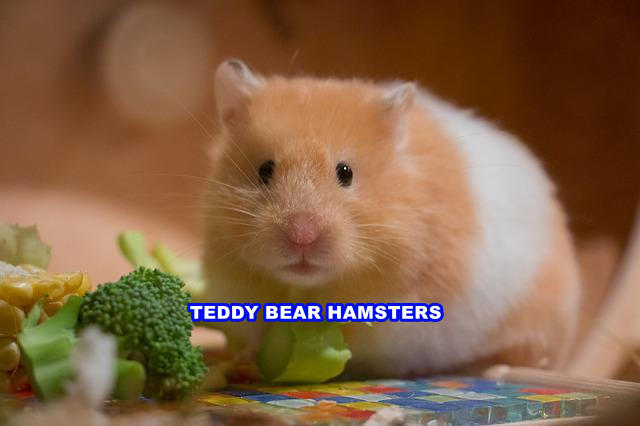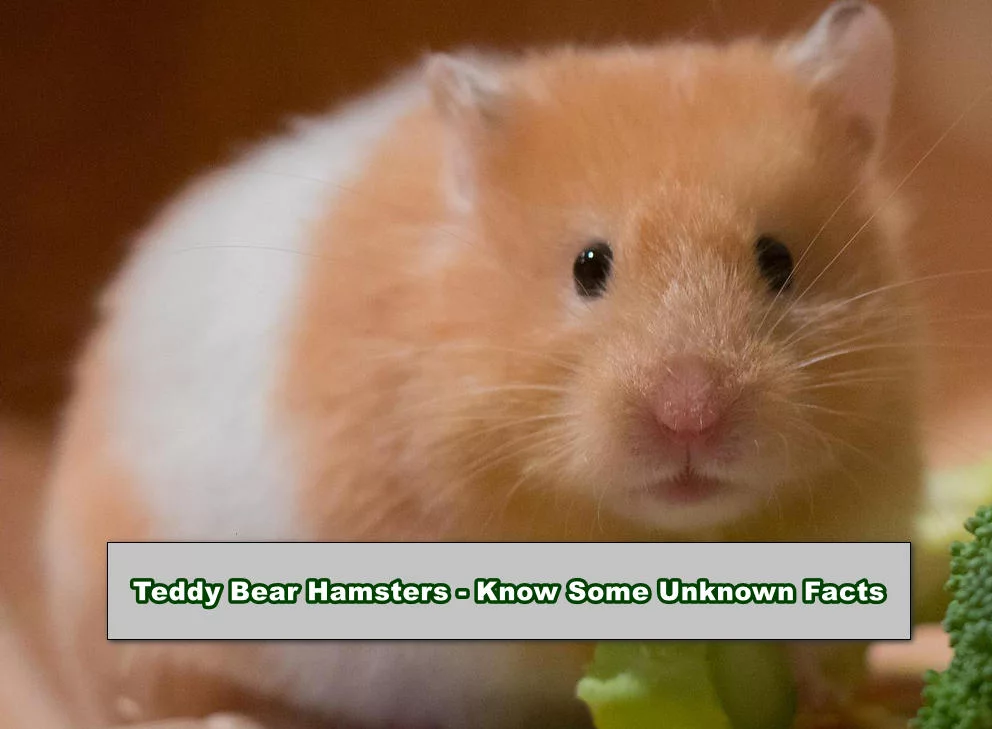Teddy Bear Hamsters are popular animals in the United States. They come under the category of hamsters and rats. In this article, you will know about this beautiful creature.
What Is A Teddy Bear Hamster?
Table of Contents
A teddy bear hamster is famous as a long-haired Syrian hamster. These adorable creatures can grow up to 8 to 14 inches long and weigh up to 10 to 16 ounces. Teddy bears get their name from their resemblance to them, their small-large ears, dark eyes, and small noses. The coats of Teddy Bear Hamsters can be a combination of colors or solid colors.
Description of Appearance and Behavior
Teddy bear hamsters can have a solid color coat or a combination of colors. Usually, their hair is brown, black, gray, or gold. Teddy bear hamsters sometimes come in various colors, including gray with a white chest, gold with splotches of white, or brown with white stripes. There are endless possibilities!
A hamster can grow up to 14 inches long and weigh 16 ounces. Compared to teddy bear hamsters, dwarf hamsters are half the size.
Teddy Bear Hamster’s Reproduction and Lifecycle
Teddy bear hamsters become mature within 40 to 45 days old. Generally, they should not be bred until they are at least six months old. A female teddy bear hamster will not mate with a male unless she is in heat.
At this point in her menstrual cycle, she is in heat, which means she may become pregnant. It is not advisable to keep a male and female Teddy bear hamster together for more than a few hours since they are not social animals.
The hamsters may have more than one partner during their lifetime. The gestation period for this hamster is 16 days. This period is similar to the gestation period of a pet mouse, which is around 19 to 21 days.
There are usually 6 to 12 pups, or babies, in a female hamster’s litter. A female may give birth to up to 20 pups in a litter. The hamster pup weighs less than one ounce and is born closed-eyed.

Their teeth and coat appear after five days. Their teeth and coat appear after five days. At around two weeks of age, the pups open their eyes. Mothers nurse their babies until they’re two weeks old. Once they’re two weeks old, the pups begin to eat solid food.
Hamster pups look like miniature versions of adult hamsters when they’re around 3 or 4 weeks old. Hamster pups can live apart from their mother at four weeks of age.
The hamsters are susceptible to an illness called wet tail disease. It causes diarrhea and loss of appetite due to bacteria in the intestines. It is best to get a hamster treated by a small animal veterinarian if it suffers from this illness.
Which Food Does a Teddy Bear Hamster Eat?
Hamsters are generally vegetarians and eat vegetables, plants, fruits, and grains. The wild hamsters are dependent on the plants growing around them.
Those hamsters living in the wild must eat only the plants surrounding them. However, pet hamsters get a wide variety of foods from their owners, including fruits, vegetables, and other treats.
Almonds and peanuts are not suitable for hamster consumption. Hamsters cannot digest these foods since they contain too many calories.
Are Teddy Bear Hamsters Carnivores, Omnivores, or Herbivores?
These tiny bears are believed to eat grasses, grains, seeds, vegetables, and fruits.
A hamster’s natural habitat consists of grasses, seeds, and grain. Many people mistakenly think they are herbivores, but they aren’t. They are actually omnivores and need a good amount of protein in their diet to stay healthy.
Are Teddy Bear Hamsters Friendly In Nature?
The teddy bear hamster can be friendly if it is handled gently and spoken softly, especially Syrian hamsters. As a result, they are famous as pets in the United States and the United Kingdom.
Teddy bear hamsters come under rat’s family but are they also friendly like hamsters? If you are interested to know, you may read our helpful article, ”Can We Consider Rats as Pets?”
Do Teddy Bear Hamsters Bite?
The teddy bear hamster is also capable of biting like other hamsters. Insecurity or ignorance are two common reasons for them to bite. Their low vision makes them vulnerable to bites as well. Thus, you should avoid touching a pet hamster until you communicate with it.
Are Teddy Bear Hamsters Aggressive?
Based on our knowledge, they are not aggressive in any way. Their nature is friendly and gentle. They attempt to escape or bite when they feel threatened or unsafe.
Can Teddy Bear Hamsters Live a Long Life?
Hamster pups are the same size as adult hamsters during the first three to four weeks of their lives. Hamsters that are four weeks old can live without their mothers. The average life expectancy for a teddy bear hamster is two to three years. According to some records, one oldest hamster lived for four and a half years.
How to Take Care of a Teddy Bear Hamster?
Hamsters that look like Teddy bears are also known as fancy bear hamsters. These hamsters are very easy to handle and require very little maintenance. If you own a hamster, you are responsible for providing the best possible care to that animal. It is recommended that these pets be housed in quality wire cages 2 feet long and 1 foot wide.

They should be provided with fresh fruits and vegetables every day. You need to clean their cage to prevent bacteria from forming regularly. Also, you should wash your baby hamsters with soap and hot water every week to keep them healthy.
Recommended: What Are The 9 Reasons To keep Guinea Pigs As A Pet?
Where Can You Get A Teddy Bear Hamster?
A teddy bear hamster can be bought at your local pet store. Additionally, small animals are sometimes given to local animal shelters by people who are unable to care for them. You may also adopt a teddy bear hamster from the animal shelter.
Recommended: How do I make my guinea pig not scared of me?